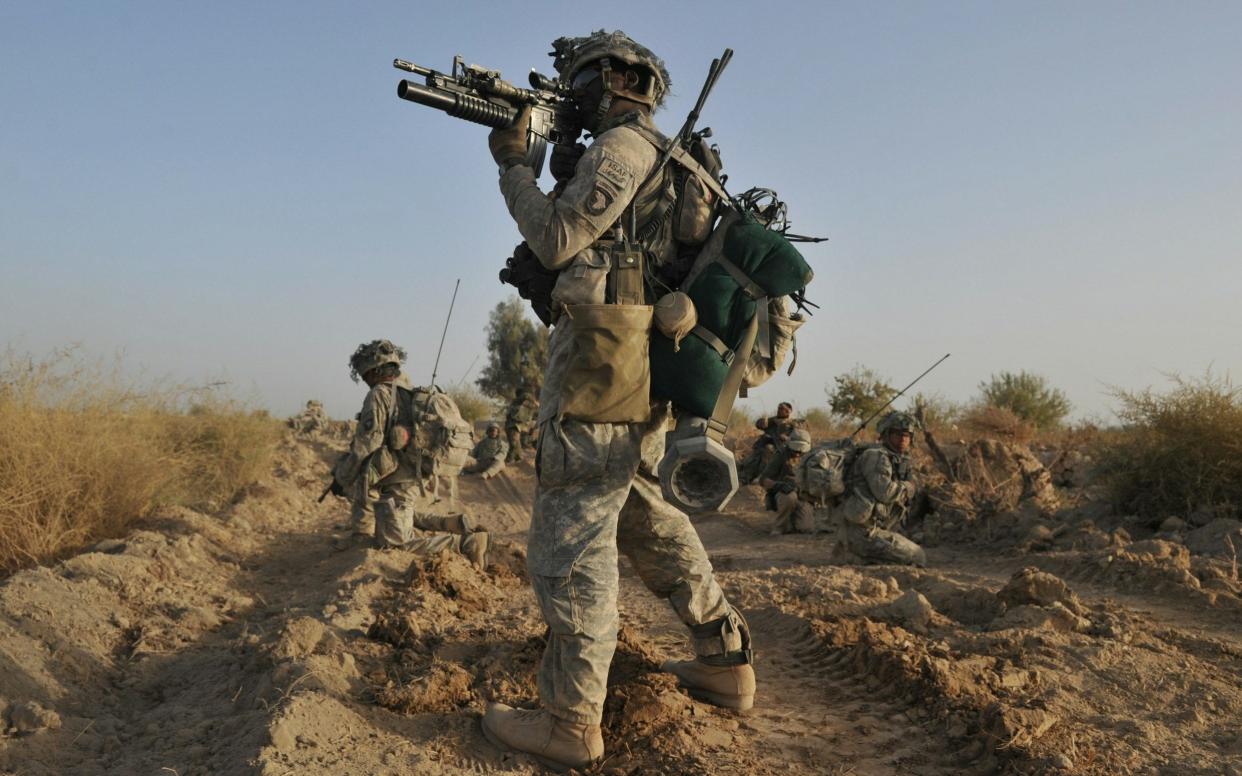First Casualty by Toby Harnden review: this is Afghanistan's Black Hawk Down

- Oops!Something went wrong.Please try again later.
- Oops!Something went wrong.Please try again later.
- Oops!Something went wrong.Please try again later.
- Oops!Something went wrong.Please try again later.
When CIA linguist David Tyson took up a posting to Central Asia in 1998, his station chief gave him what would turn out to be a prophetic warning. “Headquarters doesn’t give a s---,” growled “Fred”, his world-weary boss. “But I want you to learn about Afghanistan, because s---’s going to happen there some day.”
Three years later, Tyson, a former academic, found himself part of a joint CIA and Green Beret mission inserted into northern Afghanistan to spearhead America’s response to the 9/11 attacks. His task was to liaise with the anti-Taliban militia run by the ethnic Uzbek warlord Abdul Rashid Dostum, a job to which, as the CIA’s sole Uzbek language specialist, he was well suited. What he was less prepared for was fending off the al-Qaeda mob that cornered him two months later during a mass jihadist uprising at Dostum’s Qala-i- Jangi prison. “F---, I’ve never shot this before,” he thought, reaching for his new Browning pistol. “Do I know what I’m doing with this?”
Tyson, despite his limited combat experience, managed to shoot his way out, killing up to 40 jihadists. His CIA colleague Mike Spann, however, was surrounded and killed. Thus Spann became the first US casualty in the War on Terror. The Battle of Qala-i-Jangi, as the six-day jail gunfight came to be known, marked America’s first bitter taste of a new era of gloves-off combat.
Twenty years on, the story of Qala-i-Jangi has been recreated in full by former Telegraph journalist Toby Harnden, whose new book, First Casualty, is a vivid account of the CIA’s early Afghan campaign, written with the co-operation of the agents themselves. As the author of an acclaimed earlier book on Afghanistan – the Orwell Prize-winning Dead Men Risen, about the Welsh Guards in Helmand – Harnden was well placed to persuade the CIA to overcome its usual secrecy. Yet although the agency was keen to set the record straight, Harnden’s book reminds us that its agents work in the moral grey zones – and nowhere more so than in places like northern Afghanistan.
Their local ally Dostum, for example, was as ruthless as his Taliban foes, with a reputation for tying adversaries to tank tracks and crushing them. He told the CIA that his tough-guy act was just a way of rallying the troops, but even his chief enforcer, a brutish ex-wrestler called Abdul Sattar, was terrified of him. Sattar himself shot an elderly villager for stealing from a supply drop, and threatened a horrified CIA medic when he tried to treat the man. In the brutalised world of the agency’s new pals, hearts-and-minds was not a military strategy, but parts of the body to aim for in hand-to-hand combat. The CIA was not afraid of a scrap, however, judging by its early battles with the Taliban, which read like a 21st-century version of the imperial Great Game. While the CIA called in laser-guided airstrikes, Dostum’s men charged in on horseback, brandishing knives.
All hell then unfolded in late November 2001, when Tyson’s team tried to interrogate some 400 al-Qaeda prisoners at Qala-i-Jangi, a fortress-cum-prison in the northern city of Mazar-i-Sharif. Dostum’s men had not searched the prisoners properly. They turned out to be armed with grenades, Kalashnikovs and mortars. What followed was a kind of Alamo in reverse, with the CIA men first having to escape the fortress, leaving their Green Beret comrades to keep the al-Qaeda prisoners inside. A US airstrike went disastrously wrong, and were it not for a British SBS team, who joined in with belt-fed machine guns, the jail might well have been overrun, giving al-Qaeda a propaganda coup. In the end, 86 jihadists survived.
Harnden’s account is both well-informed and panoramic, flitting from the Afghan combat theatre to the CIA’s HQ in Langley and the homes of anxious servicemen’s families. It bears comparison with Mark Bowden’s classic Black Hawk Down, which tells a similar tale of US troops under attack in Mogadishu. After the disastrous pull-out from Kabul last month, historians may see America’s Afghan campaign as just as much of a cautionary tale as the disastrous Somalia mission.
One reason why servicemen co-operate with authors like Harnden is to remind the public that, whatever the failures at policy level, the bravery of those on the ground should not be forgotten. In 2002, a marble plaque was unveiled at Qala-i-Jangi to commemorate Spann, and his sacrifice for “freedom for Afghanistan and the United States”. The plaque is now back in Taliban hands.
First Casualty is published by Welbeck at £18.99. To order your copy for £16.99 call 0844 871 1514 or visit the Telegraph Bookshop

